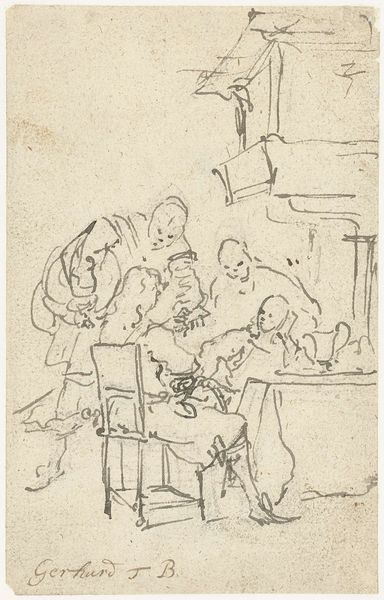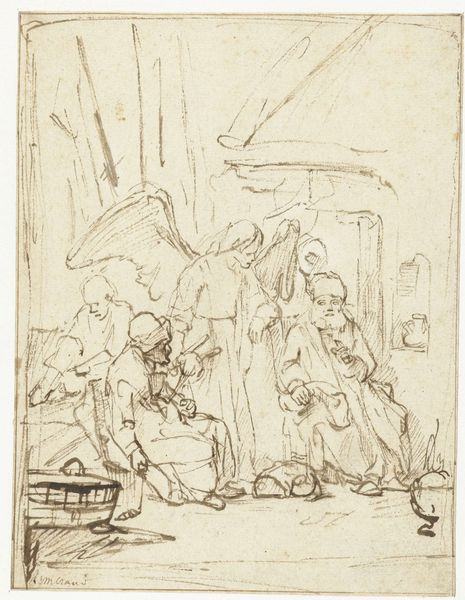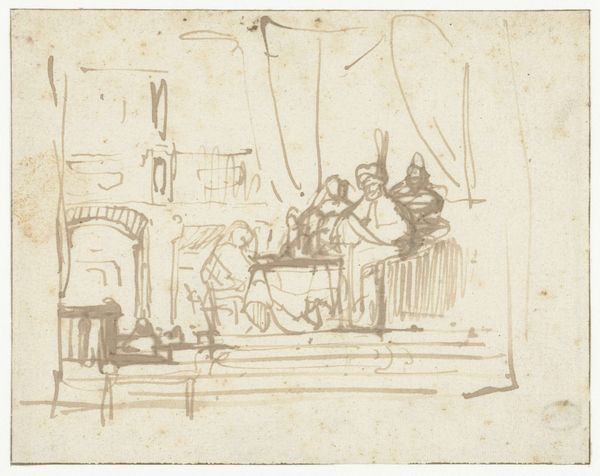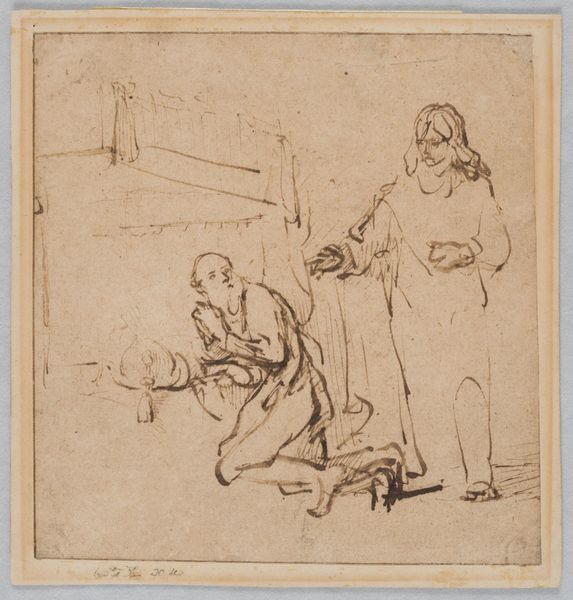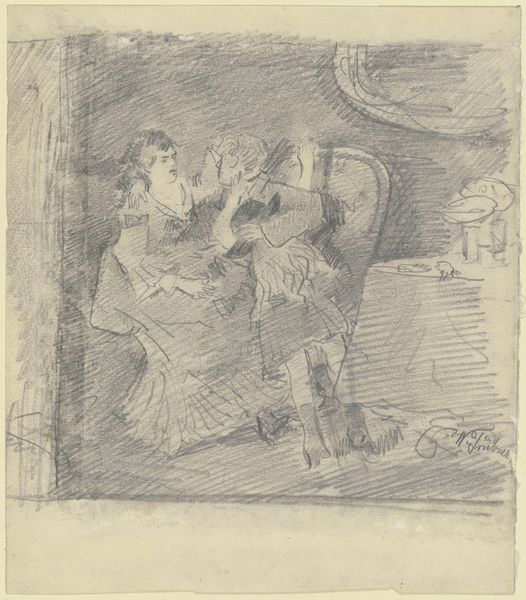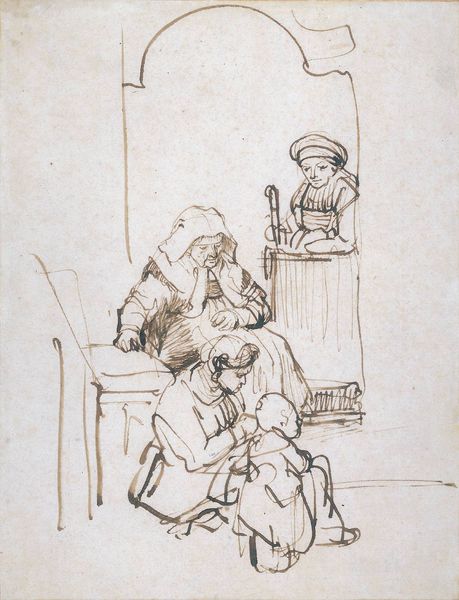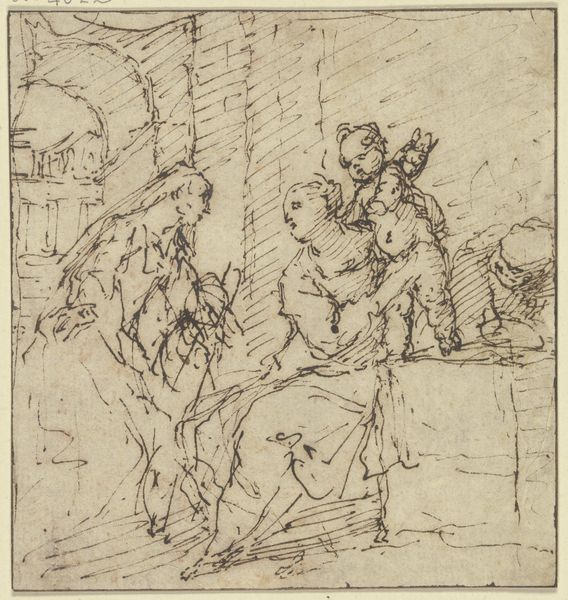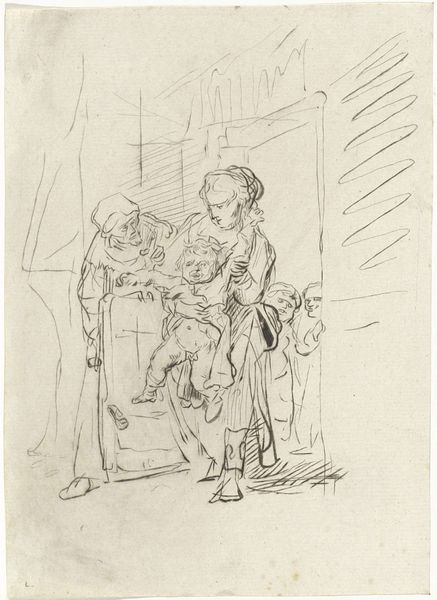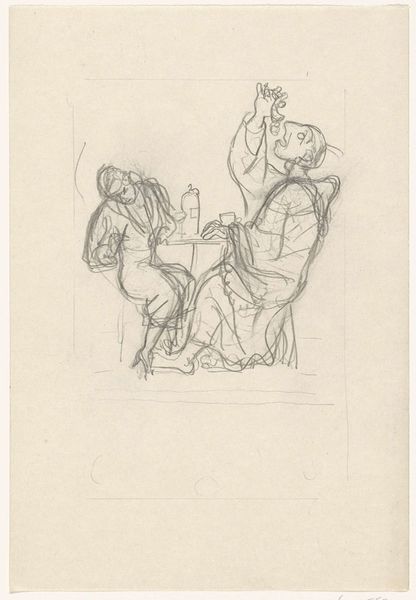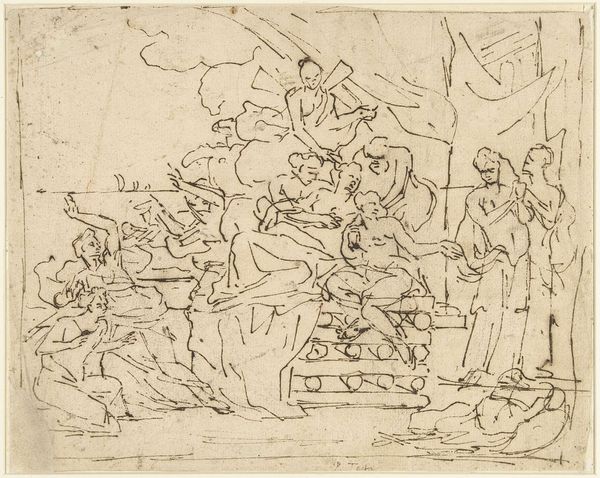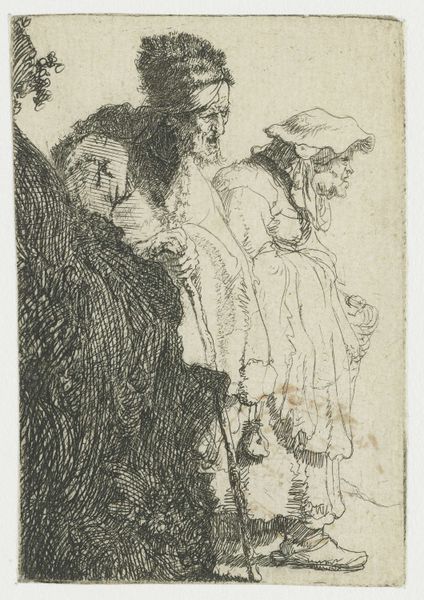
Dimensions: height 176 mm, width 133 mm
Copyright: Rijks Museum: Open Domain
Editor: So, this etching from 1782, titled "Drie mannen rond een tafel" or "Three men around a table," is attributed to Jabes Heenck. It's a scene of, well, three men sitting around a table. The atmosphere feels kind of…earthy, and I’m immediately wondering, what’s the story here? How do you interpret this work? Curator: It’s interesting you say 'earthy'. What jumps out at me is how this print encapsulates the Dutch Golden Age’s fascination with depicting everyday life, particularly that of the working class. Heenck situates these men, perhaps laborers or tradesmen, in a way that subtly comments on class and social structure. Notice how their clothing and the simplicity of their surroundings contrast with the elaborate attire often seen in portraits of the aristocracy of the time. Do you see anything in their posture and expressions that you find noteworthy? Editor: They look… comfortable? Almost like they're in their own world. Maybe they are rejecting social expectations? Curator: Precisely. Their relaxed posture and engaged interaction suggest a camaraderie, a sort of resistance against the more performative aspects of societal life, wouldn't you agree? The casualness almost acts as a silent critique of formality. I wonder, what would it have meant to see such a candid depiction during that period? Editor: I guess seeing this level of candidness would feel revolutionary because they aren’t behaving in a certain, “proper” manner, like the upper class. Now that I think about it, there could even be something revolutionary in them taking up space around the table. Curator: Exactly! This "genre scene" actually has political undertones, because it disrupts what the "proper" kind of life would be. With each viewing, you realize there is more depth than first presumed. Editor: That makes me look at it with fresh eyes. Thank you.
Comments
No comments
Be the first to comment and join the conversation on the ultimate creative platform.
